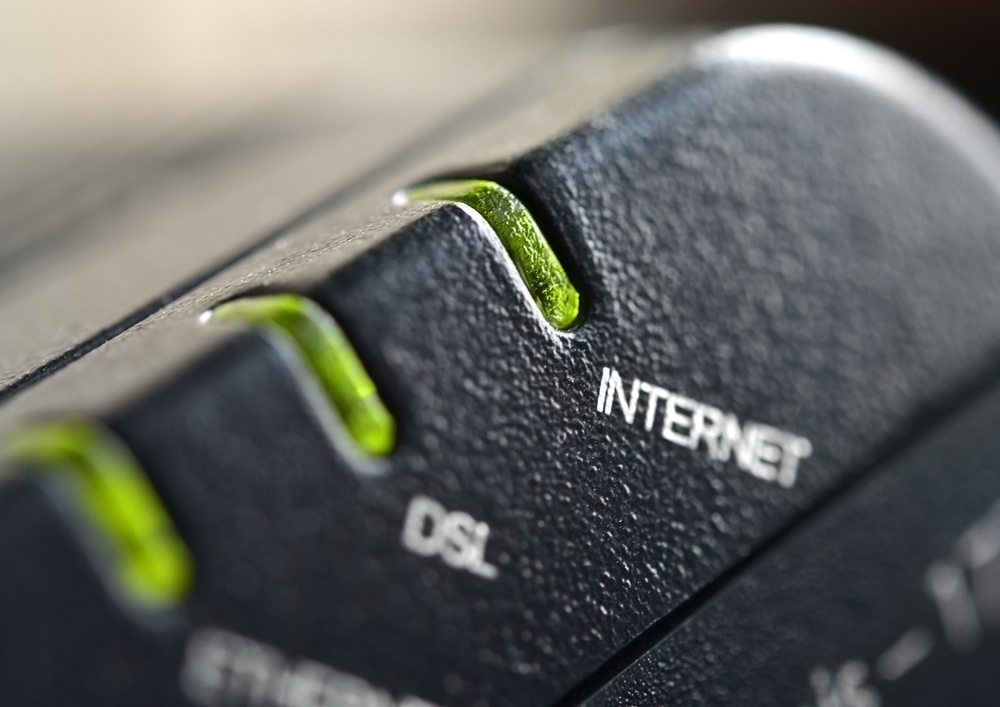Forget Black Friday and Cyber Monday, Amazon Prime Day is a day full of deep discounts and awesome deals! Maximize your shopping experience.
30 October, 2024 | Posted by:
Category: This & That, Tips | No Comments

Amazon Prime Day is a shopper's paradise, but navigating the sea of deals can be overwhelming. Here’s an enhanced, informative guide to help you snag the best bargains.
Sign Up for Prime: Ensure you have an active Amazon Prime membership. Non-members can sign up for a 30-day free trial to take advantage of Prime Day deals.
Set a Budget: Determine how much you're willing to spend. This will help you avoid impulse buys and stay focused on your goals.
Make a Wish List: List the items you’re interested in. This not only helps you stay organized but also allows you to monitor price changes leading up to Prime Day.
Watch Deals: Use Amazon’s "Watch this Deal" feature to get notifications when deals go live on items you’re interested in.
Amazon Assistant: Install the Amazon Assistant browser extension. It helps you track prices, compare products, and get deal alerts.
CamelCamelCamel: This price tracking website can show you the price history of Amazon products, helping you determine if a deal is truly a bargain.
Check Competitors: Other retailers often run promotions during Prime Day. Compare prices on sites like Walmart, Best Buy, and Target to ensure you’re getting the best deal.
Use Price Comparison Tools: Extensions like Honey and Keepa can help you compare prices across multiple sites.
Follow Influencers and Deal Sites: Social media influencers and websites like Slickdeals, DealNews, and RetailMeNot often post the best Prime Day deals.
Join Deal Forums: Participate in forums like Reddit’s r/Deals and r/PrimeDay for user-shared deals and tips.
Amazon Devices: Prime Day often features deep discounts on Amazon devices like Echo, Kindle, and Fire TV.
Lightning Deals: These are time-sensitive deals that offer significant discounts but sell out quickly. Keep an eye on them throughout the day.
Prime Day Launches: New products and exclusive items are often launched on Prime Day. Check out these sections for unique finds.
Amazon Credit Card: If you have an Amazon Prime Rewards Visa Signature Card, you can earn 5% back on all Amazon purchases.
Gift Cards: Sometimes, Amazon offers promotions where you can get a bonus when purchasing a gift card. Use this bonus to save on your Prime Day purchases.
Alexa-Exclusive Deals: Ask Alexa, “What are my Prime Day deals?” to access exclusive deals available only through Amazon’s voice assistant.
By preparing in advance, using the right tools, comparing prices, and staying informed, you can make the most out of Amazon Prime Day and find the best deals. Happy shopping!
Internet speed tests are useful tools for gauging how much bandwidth is available to you. You can choose your Internet speed testing website based on several factors. Here are some of the top sites for you to gauge your internet providers speeds including AT&T High Speed Internet Speed Test CenturyLink Broadband Speed Test Cox Internet Speed Test Fios Speed Test (Verizon) Rise Broadband Speed Test Spectrum Speed Test (Charter) WOW! Speed Test XFINITY Speed Test (Comcast) Cox Internet Speed Test
30 October, 2024 | Posted by: Pablo Mendoza
Category: Reviews, Technology, Tips | No Comments

Testing your internet speed is essential to ensure you're getting the service you pay for. Here’s a comprehensive guide on why and how to conduct internet speed tests, along with recommended tools.
Using your ISP's speed test tools can provide more accurate results specific to your service. Here are links to major providers' speed test sites:
If your ISP doesn’t provide a speed test, or you want a third-party verification, use these reliable independent speed tests:
Regularly testing your internet speed helps you ensure you’re getting the service you pay for and can identify any issues with your connection. Use both ISP-specific and independent tools for comprehensive testing.
The truth is that, when most internet service providers (ISPs) advertise a rate for their service, they are actually advertising the maximum potential that their service has to offer.
30 October, 2024 | Posted by:
Category: Tips | No Comments

In today’s digital age, having a fast and reliable internet connection is essential for both home and business environments. Here’s a detailed guide on optimizing your internet connection, along with an overview of the best plans offered by top ISPs for homes and businesses.
Problem: Some applications or devices consume more bandwidth, slowing down your entire network.
Solutions:
Problem: Outdated software can slow down your devices and network.
Solutions:
Problem: Malware can significantly reduce your internet speed.
Solutions:
Problem: Overloaded devices can underperform.
Solutions:
Problem: Dust and outdated hardware can cause speed issues.
Solutions:
Problem: Not all ISPs offer the same quality of service.
Solutions:
Best Plan for Homes: Internet 1000 - Offers up to 1000 Mbps, suitable for large households with multiple devices streaming, gaming, and working from home. No data caps and includes equipment rental.
Best Plan for Businesses: AT&T Business Fiber 1000 - Provides up to 1000 Mbps, ideal for small to medium-sized businesses requiring high-speed internet for video conferencing, cloud applications, and large file transfers.
Best Plan for Homes: Spectrum Internet Ultra - Provides up to 400 Mbps, great for households with heavy internet usage. No data caps and includes a free modem.
Best Plan for Businesses: Spectrum Business Internet - Offers up to 1 Gbps, suitable for businesses needing reliable and fast internet for multiple users and devices. Includes static IP and 24/7 support.
Best Plan for Homes: Optimum 1 Gig - Up to 940 Mbps, perfect for large families with high internet usage. Includes Wi-Fi extender for better coverage.
Best Plan for Businesses: Optimum Business Internet 500 - Offers up to 500 Mbps, ideal for small businesses needing fast and reliable internet for daily operations. Includes business-class support and security features.
Best Plan for Homes: Unlimited Gold 50 - Provides up to 50 Mbps, suitable for rural areas with limited options. Includes unlimited data, but speeds may be reduced after a certain threshold.
Best Plan for Businesses: Viasat Business 35 - Offers up to 35 Mbps, good for small businesses in remote locations. Provides priority data and business-grade support.
Best Plan for Homes: 30 GB Plan - Offers up to 25 Mbps, suitable for rural households with basic internet needs. Includes data tokens to manage overages.
Best Plan for Businesses: HughesNet Business 50 - Provides up to 25 Mbps with 50 GB data allowance, ideal for small businesses in remote areas. Includes 24/7 business support.
A fast and reliable internet connection is crucial for maximizing productivity and enjoyment in both home and business settings. By identifying and managing bandwidth hogs, updating software, protecting against malware, optimizing hardware, and selecting the right ISP, you can significantly improve your internet speed.
Getting reliable internet service at a reasonable speed sets many Americans back well over 50 dollars a month -- a number which does not even begin to take into account additional charges such as installation, equipment, and the combined total of internet combo packages.
30 October, 2024 | Posted by:
Category: Tips | No Comments

Choosing the right internet plan can be overwhelming due to various factors that affect costs. This guide will help you understand these factors, compare providers, and give you tips to optimize your internet expenses.
Impact: Prices vary significantly depending on your location. Urban areas typically offer lower costs due to competition and infrastructure, while rural areas may face higher prices.
Tip: Check multiple providers in your area to find the best rates. Use websites like Konecteaze to compare local providers.
Options:
Tip: Choose the connection type that best suits your usage and budget.
Impact: Many ISPs have data caps, leading to extra charges for exceeding limits.
Tip: Monitor your data usage to avoid overage fees. Tools like your ISP’s app or third-party applications can help track usage.
Impact: Faster speeds cost more. Consider your actual needs.
Tip: For general use, 15 Mbps download and 4 Mbps upload per user are sufficient. Gamers and streamers may need higher speeds.
Impact: Renting modems and routers can increase costs.
Tip: Invest in your own equipment to save in the long run. Ensure compatibility with your ISP’s network.
Impact: Long-term contracts often offer lower rates but less flexibility.
Tip: Choose based on your stability needs and future plans. Some providers offer no-contract options for more flexibility.
Impact: Bundling internet with TV and phone services can reduce overall costs.
Tip: Look for bundle deals that suit your needs. Bundles can offer significant savings compared to individual services.
Action: Contact your provider to negotiate a better rate or find retention offers. Be prepared to switch providers if they don’t offer a competitive deal.
Action: Periodically check for better deals or plans that match your current usage. Providers often introduce new plans and promotions.
Action: Use data-saving tools and ensure efficient use of your internet connection. For example, adjust video streaming quality and update software during off-peak hours.
Action: Take advantage of new customer promotions or seasonal discounts. Websites like Konecteaze often list current deals and offers.
| Provider | Price Range | Plans | Speed Range | Equipment Prices | Hidden Fees | Customer Service Reputation |
|---|---|---|---|---|---|---|
| AT&T | $35-$60 | Internet 100, Internet 300 | 100-1000 Mbps | $10/month rental or buy for $100 | Early termination fees | Good |
| Spectrum | $50-$100 | Spectrum Internet, Ultra, Gig | 200-940 Mbps | $5/month rental or buy for $200 | Installation fees | Average |
| Optimum | $40-$70 | Optimum 300, 500, 1 Gig | 300-1000 Mbps | $10/month rental or buy for $149 | Data overage fees | Fair |
| Viasat | $30-$150 | Bronze, Silver, Gold Plans | 12-100 Mbps | $10/month rental or buy for $299 | Data overage and lease fees | Poor |
| $60-$150 | 10 GB, 20 GB, 30 GB | 25 Mbps | $15/month rental or buy for $450 | Data overage fees | Poor |
Understanding the various factors that influence internet costs can help you make informed decisions and find the best deal. If you’re not satisfied with your current provider, consider your options carefully. Use the tips and solutions provided to optimize your internet expenses. At Konecteaze, we can help you find the best service provider for your family and ensure you get the most value for your money.
If you telecommute, then the following 6 internet tips can help you use your connection to its fullest potential, thus improving your productivity tremendously.
15 November, 2024 | Posted by:
Category: Tips | No Comments

Telecommuting has become increasingly popular, especially with the rise of remote work due to the COVID-19 pandemic. Here are six essential internet tips to help telecommuters maximize their productivity:
Your professional reputation and productivity depend on a fast and reliable internet connection. Choose a reputable ISP with robust networks, such as AT&T, CenturyLink, Spectrum, or Xfinity. For those in rural areas, HughesNet or Viasat are viable options but may have limitations with VPNs.
If you work for a traditional employer, they may be responsible for subsidizing your internet costs. Freelancers can write off work-related expenses for tax deductions. Always discuss these options with your employer.
Ensure you get the best deal without compromising quality. Use tools like the Konecteaze Internet Search to compare options. You might find a faster and cheaper plan with a different provider.
Improve your internet speed by placing your router in an open location, using QoS to manage bandwidth, and rebooting your router regularly.
Understanding internet speed metrics can help you choose the best plan for your needs. Download speed is crucial for most telecommuters, while upload speed is vital for video calls and large file uploads. Reliability is essential for real-time communications.
Place your router near your workspace for a better connection. If this isn’t possible, consider a WiFi extender or mesh network. Customize a designated home office area to enhance productivity.